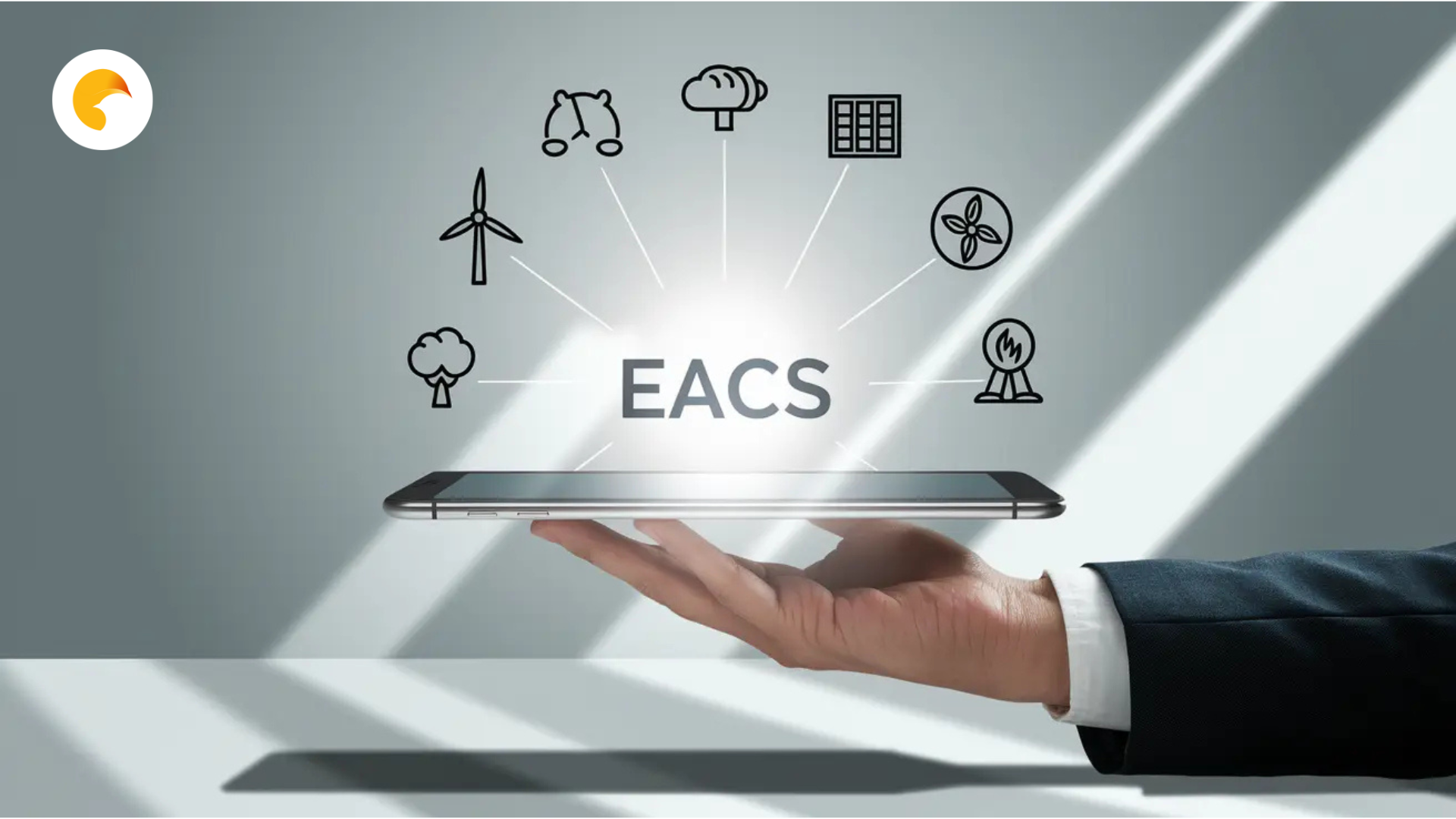Energy Attribute Certificates EACs: Key to Energy Transition
With global efforts converging on the Paris Agreement goal of limiting warming to 1.5 °C, greenhouse gas (GHG) emissions must peak by 2025 and decline by 43 % by 2030—necessitating deep decarbonization across all sectors [1]. Yet the energy sector, responsible for roughly three-quarters (73%) of global GHG emissions remains one of the least transparent industries, leaving consumers and corporations uncertain about the true carbon impact of their electricity [2]. This lack of clarity is not just a technical gap, it also presents real financial and reputational risks to companies in the energy sector.
Between 2023 and 2024, European companies drove record trading volumes in Guarantees of Origin (GOs), with issuances surpassing 185 TWh across Association of Issuing Bodies (AIB) countries, up markedly from the previous year [3]. This spike in supply coincided with heightened corporate demand, which pushed GO prices during 2023 into a range between €3 and €8.50 /MWh, varying by country and policy context [4].
EACs and Their Climate Impact.
An Energy Attribute Certificate (EAC) is a tracking instrument that certifies one megawatt-hour (MWh) of electricity generated from a renewable source such as wind, solar, hydro (water), or biomass and injected into the grid [5]. Upon retirement, the buyer gains exclusive legal rights to claim the renewable attributes of that energy. Under the GHG Protocol’s Scope 2 Guidance, market-based accounting methods allow organizations to reflect emissions according to their contractual procurement choices, making EACs the base of credible Scope 2 disclosures [6].
The EU’s Corporate Sustainability Reporting Directive (CSRD) advises that large companies publish standardized sustainability reports covering fiscal year 2024 (with disclosures due in 2025), intensifying corporate focus on renewable sourcing [7]. Simultaneously, the Carbon Border Adjustment Mechanism (CBAM) entered its transitional phase on October 1, 2023, with definitive obligations potentially including acceptance of EACs as proof of renewable consumption, scheduled from January 1, 2026 [8].
Different Types of EACs.
The global EAC ecosystem is expanding rapidly as more countries establish registries and tracking mechanisms. Below is an overview of current systems, aligned with authoritative national and regional frameworks:
Type of EACs Worldwide (Design: Olabanji Stephen)
Worldwide Acceptance of EACs
It can be observed that the validity of some of these certificates are subject to distinct rules such as geographical validity, type, and jurisdiction. For instance, some EACs are transferable across borders within certain regions (e.g., GOs within the EU), while others are confined to national markets. Also, RECs in the U.S. are subject to state-specific retirement windows ranging from three months in New England to up to four years in Wisconsin or Nevada [9]. As a result, corporate buyers must therefore navigate diverse requirements, transferability constraints, geographic applicability, expiration policies, and registry protocols to ensure compliance with local reporting standards.
What the future holds for Renewable Producers.
Studies portray that aligning with CBAM and CSRD frameworks to recognize EACs could multiply global demand for documented renewable electricity and unlock approximately €32 billion in additional annual revenue for clean-energy producers by 2030 [10]. Such a boost would significantly strengthen investment signals, enabling sustained growth in renewable capacity.
Market Challenges.
Despite their critical role, EAC markets suffer from fragmentation, opaque pricing mechanisms, and decentralized trading platforms. Monthly or annual procurement cycles expose buyers to price volatility tied to wholesale energy fluctuations, while the absence of unified market rules raises transaction costs and complicates strategic planning for corporates seeking to optimize renewable energy portfolios.
At Spritju, our platform brings together every step of Energy Attribute Certificate management that is trading, tracking, retirement, and reporting into a single, intuitive interface. By uniting real-time market data, automated workflows, and strong audit trails, Spritju streamlines market-based accounting and gives organizations the clarity and control they need to procure renewable electricity with confidence. To better understand the solution Spritju provides, here are three key points to remember:
What Spritju helps with
Whether you’re optimizing cost, managing risk, or meeting evolving regulatory requirements, Spritju empowers you to navigate the complexities of the EAC marketplace effortlessly. Subscribe to our bi-weekly newsletter for ongoing insights, or contact us now to see how Spritju can power your sustainable journey.
Reference
- Intergovernmental Panel on Climate Change. (2022, April 4). IPCC AR6 Working Group III: The Physical Science Basis—Press Release. IPCC. Retrieved May 20, 2025, from https://www.ipcc.ch/2022/04/04/ipcc-ar6-wgiii-pressrelease/
- World Resources Institute. (2025). 4 Charts Explain Greenhouse Gas Emissions by Sector. WRI. Retrieved May 20, 2025, from https://www.wri.org/insights/4-charts-explain-greenhouse-gas-emissions-countries-and-sectors
- Montel Group. (2025). Guarantees of Origin (GO) Market Outlook 2025. Montel. Retrieved May 20, 2025, from https://montel.energy/blog/guarantees-of-origin-go-market-outlook-2025
- Walsh, J. (2023). A Bullish Year for EACs Across the Globe. Environmental Finance. Retrieved May 20, 2025, from https://www.environmental-finance.com/content/awards/environmental-market-rankings-2023/categories/
- Wikipedia contributors. (n.d.). Guarantee of origin. In Wikipedia, The Free Encyclopedia. Retrieved May 20, 2025, from https://en.wikipedia.org/wiki/Guarantee_of_origin Wikipedia
- Greenhouse Gas Protocol. (2023, March). Scope 2 Guidance. GHG Protocol. Retrieved May 20, 2025, from https://ghgprotocol.org/sites/default/files/2023-03/Scope%202%20Guidance.pdf
- Trellis. (2023). What US Companies Need to Know About the EU’s CSRD. Trellis. Retrieved May 20, 2025, from https://trellis.net/article/what-us-companies-need-know-about-eus-csrd/
- European Commission. (n.d.). Carbon Border Adjustment Mechanism (CBAM). European Commission. Retrieved May 20, 2025, from https://taxation-customs.ec.europa.eu/carbon-border-adjustment-mechanism_en Taxation and Customs Union
- Oak Ridge National Laboratory. (2022, August). Better Plants Renewable Energy Certificates Overview. U.S. Department of Energy. Retrieved May 20, 2025, from https://energyefficiency.ornl.gov/wp-content/uploads/2022/08/Better-Plants-Renewable-Energy-Certificates-Overview_Aug-2022.pdf
- ECOHZ. (2023). New EU Climate Policies Could Triple Global Demand for Documented Renewable Electricity. ECOHZ. Retrieved May 20, 2025, from https://www.ecohz.com/press-releases/new-eu-climate-policies-could-triple-global-demand-for-documented-renewable-electricity



